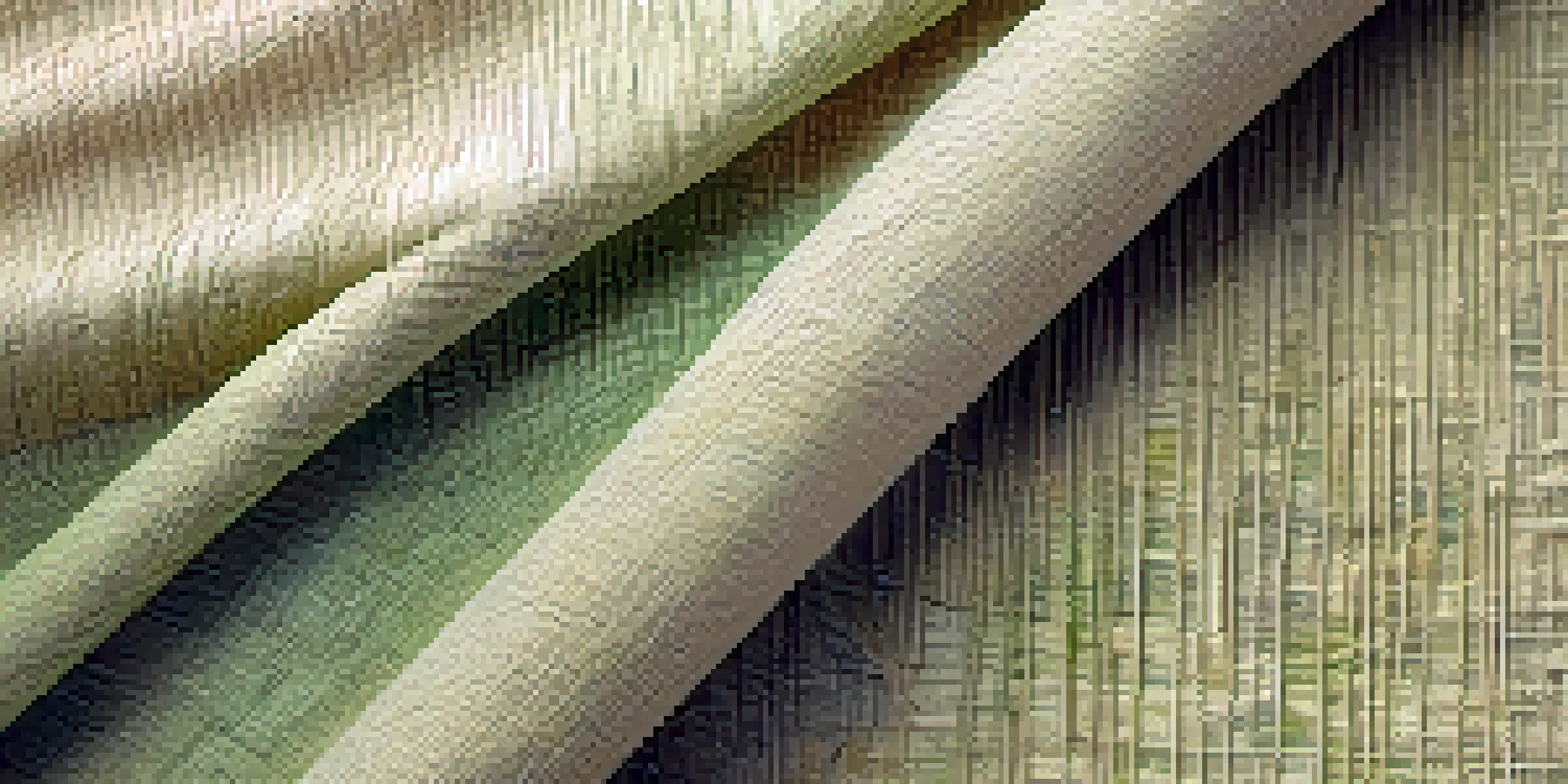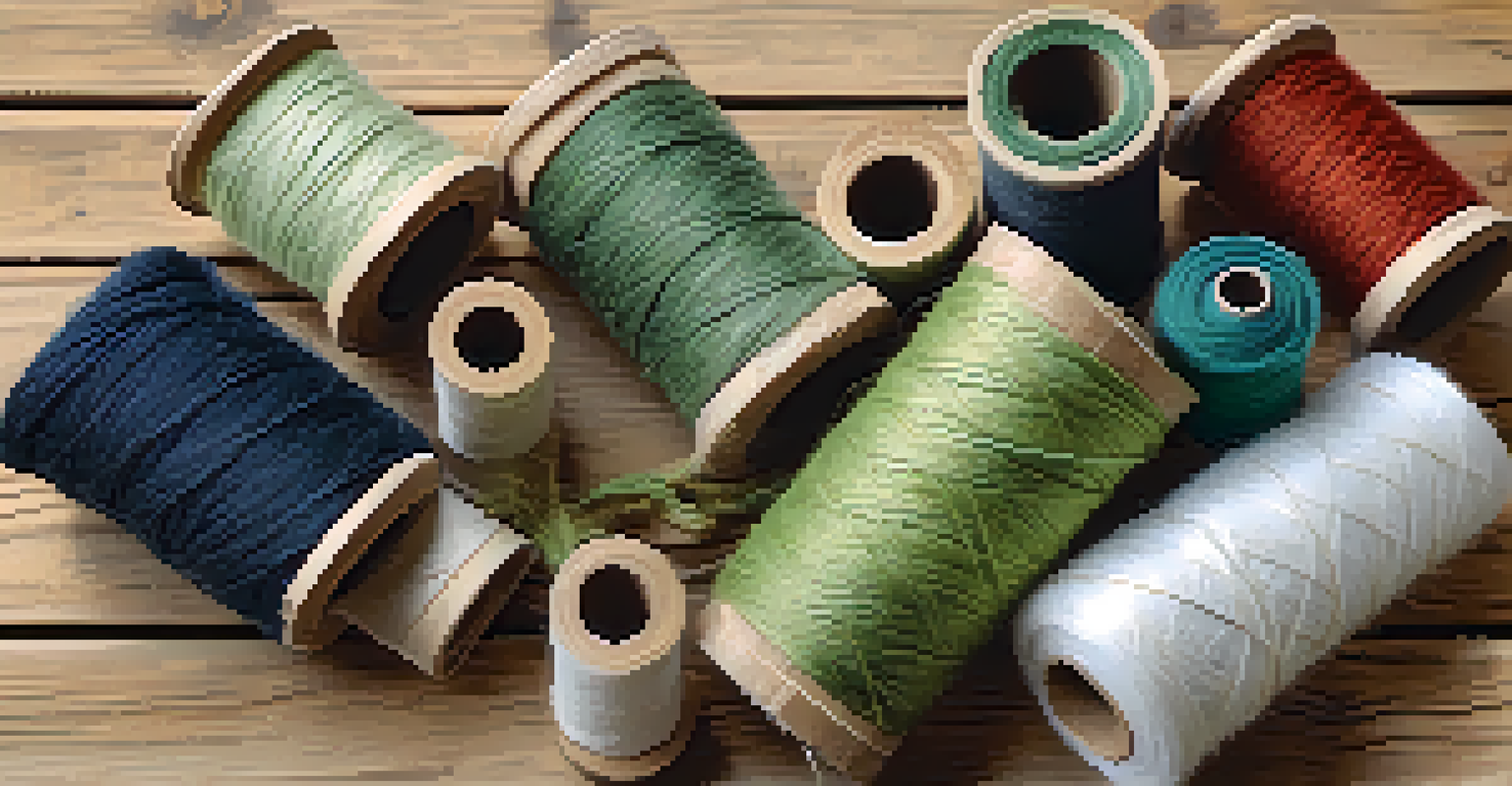Eco-Friendly Fashion: Transforming Textiles with Plant Fibers

Understanding Eco-Friendly Fashion and Its Importance
Eco-friendly fashion refers to clothing and accessories made with sustainable practices that minimize environmental impact. In a world where fast fashion reigns, this movement highlights the need for responsible consumption and production. By embracing eco-friendly fashion, we can reduce waste, lower carbon footprints, and support ethical labor practices.
Fashion is the armor to survive the reality of everyday life.
The importance of eco-friendly fashion cannot be overstated. With the textile industry being one of the largest polluters, making conscious choices can help preserve our planet for future generations. Consumers are increasingly aware of their purchasing decisions, opting for brands that prioritize sustainability and transparency.
Ultimately, eco-friendly fashion is about more than just clothing; it's a lifestyle choice that aligns with values of conservation and ethical treatment. As more people adopt this mindset, the industry is likely to see a significant shift towards sustainable alternatives.
Plant Fibers: The Backbone of Sustainable Textiles
Plant fibers, derived from natural sources like cotton, hemp, and bamboo, play a crucial role in the eco-friendly fashion landscape. These fibers are biodegradable and often require less water and energy to produce compared to synthetic alternatives. This quality makes them appealing to brands that aim to reduce their environmental impact.

In addition to being more sustainable, plant fibers offer a range of benefits. They are breathable, durable, and often hypoallergenic, making them suitable for various climates and skin types. This versatility allows designers to create stylish pieces that are both functional and environmentally friendly.
Eco-Friendly Fashion Reduces Waste
Embracing eco-friendly fashion helps minimize environmental impact by promoting responsible consumption and production.
Moreover, the cultivation of plant fibers can support local economies and promote sustainable agricultural practices. By sourcing materials responsibly, brands can help foster a more equitable supply chain, benefiting farmers and communities alike.
Popular Types of Plant Fibers Used in Fashion
Several plant fibers have gained popularity in the fashion industry, each with unique properties. Cotton is perhaps the most well-known, cherished for its softness and versatility. However, the environmental impact of conventional cotton farming can be significant, leading to a rise in organic cotton alternatives.
Sustainability is no longer about doing less harm. It’s about doing more good.
Hemp is another standout option, known for its strength and durability. It requires minimal pesticides and water, making it an eco-friendly choice for clothing and accessories. As more brands incorporate hemp into their collections, it’s becoming a staple in sustainable fashion.
Bamboo is also making waves in the industry, thanks to its rapid growth and renewability. While bamboo can be processed into a soft fabric called rayon, it’s essential to ensure eco-friendly methods are used during production to maintain its sustainability credentials.
The Role of Innovation in Eco-Friendly Fashion
Innovation plays a critical role in advancing eco-friendly fashion, particularly in the development of new plant-based textiles. Researchers and designers are constantly exploring ways to enhance the properties of plant fibers, creating fabrics that are not only sustainable but also high-performing. This innovation helps bridge the gap between fashion and sustainability.
For instance, companies are experimenting with blending different plant fibers to achieve unique textures and characteristics. This creativity allows for a broader range of styles while maintaining a commitment to eco-friendliness. Such innovations can attract a wider audience, encouraging more consumers to choose sustainable options.
Plant Fibers Support Sustainability
Plant fibers, such as cotton, hemp, and bamboo, are biodegradable and require fewer resources, making them ideal for sustainable textiles.
Additionally, advancements in technology, like 3D printing and dyeing processes, are revolutionizing how we produce and consume fashion. By reducing waste and energy consumption, these methods align with the eco-friendly values of modern consumers.
Challenges Facing Plant Fiber Adoption in Fashion
Despite the benefits of plant fibers, several challenges hinder their widespread adoption in the fashion industry. One significant issue is the perception that sustainable clothing is more expensive or less stylish than traditional options. Overcoming this stigma is crucial for encouraging consumers to embrace eco-friendly choices.
Another challenge lies in the supply chain. Sourcing high-quality plant fibers sustainably can be complex, often requiring transparency and collaboration between brands and farmers. Ensuring ethical practices throughout the supply chain is essential to maintain the integrity of eco-friendly fashion.
Lastly, there’s a need for education and awareness among consumers. Many people still lack knowledge about the environmental impacts of their clothing choices. By promoting information and resources, we can empower consumers to make informed decisions that support sustainable fashion.
How Consumers Can Support Eco-Friendly Fashion
Consumers have a powerful role in promoting eco-friendly fashion. By choosing to purchase from brands that prioritize sustainability, individuals can drive demand for plant-based textiles and ethical practices. This shift can encourage more companies to adopt eco-friendly approaches, ultimately benefiting the planet.
It's also helpful for consumers to embrace mindful shopping habits. This includes supporting second-hand stores, participating in clothing swaps, and investing in high-quality pieces that last longer. By reducing overall consumption, we can lessen our environmental impact.
Consumer Choices Shape Fashion's Future
Consumers can drive demand for sustainable practices by choosing eco-friendly brands and adopting mindful shopping habits.
Moreover, educating oneself about sustainable fashion can foster a deeper appreciation for eco-friendly choices. By sharing knowledge with friends and family, consumers can create a ripple effect, inspiring others to consider the environmental implications of their clothing purchases.
The Future of Eco-Friendly Fashion with Plant Fibers
The future of eco-friendly fashion looks promising, particularly with the continued development of plant-based fibers. As technology advances, we can expect to see even more innovative materials that challenge traditional textiles. This evolution will likely make sustainable fashion more accessible and appealing to a broader audience.
Additionally, as consumers become more aware of their choices, the demand for transparency and ethical practices will drive brands to improve their sustainability efforts. This shift could lead to a more responsible fashion industry, where sustainability is not just an option, but a standard.

Ultimately, the journey towards a more sustainable future in fashion relies on collaboration between consumers, brands, and innovators. By working together, we can pave the way for eco-friendly practices that benefit both people and the planet.